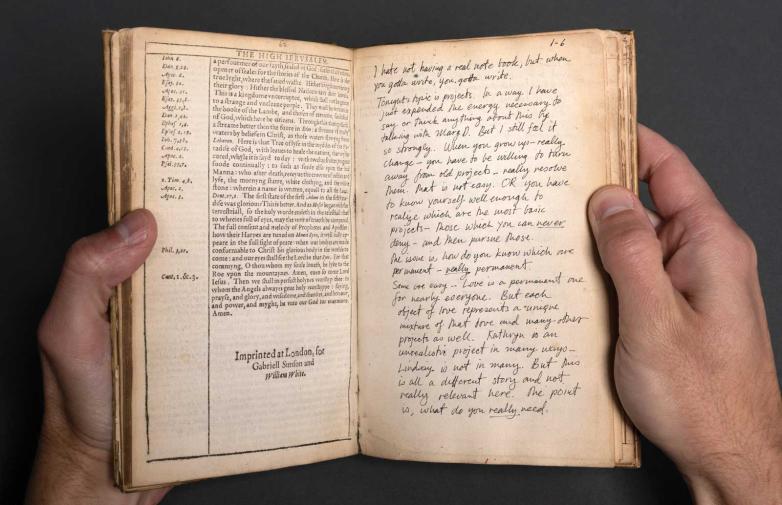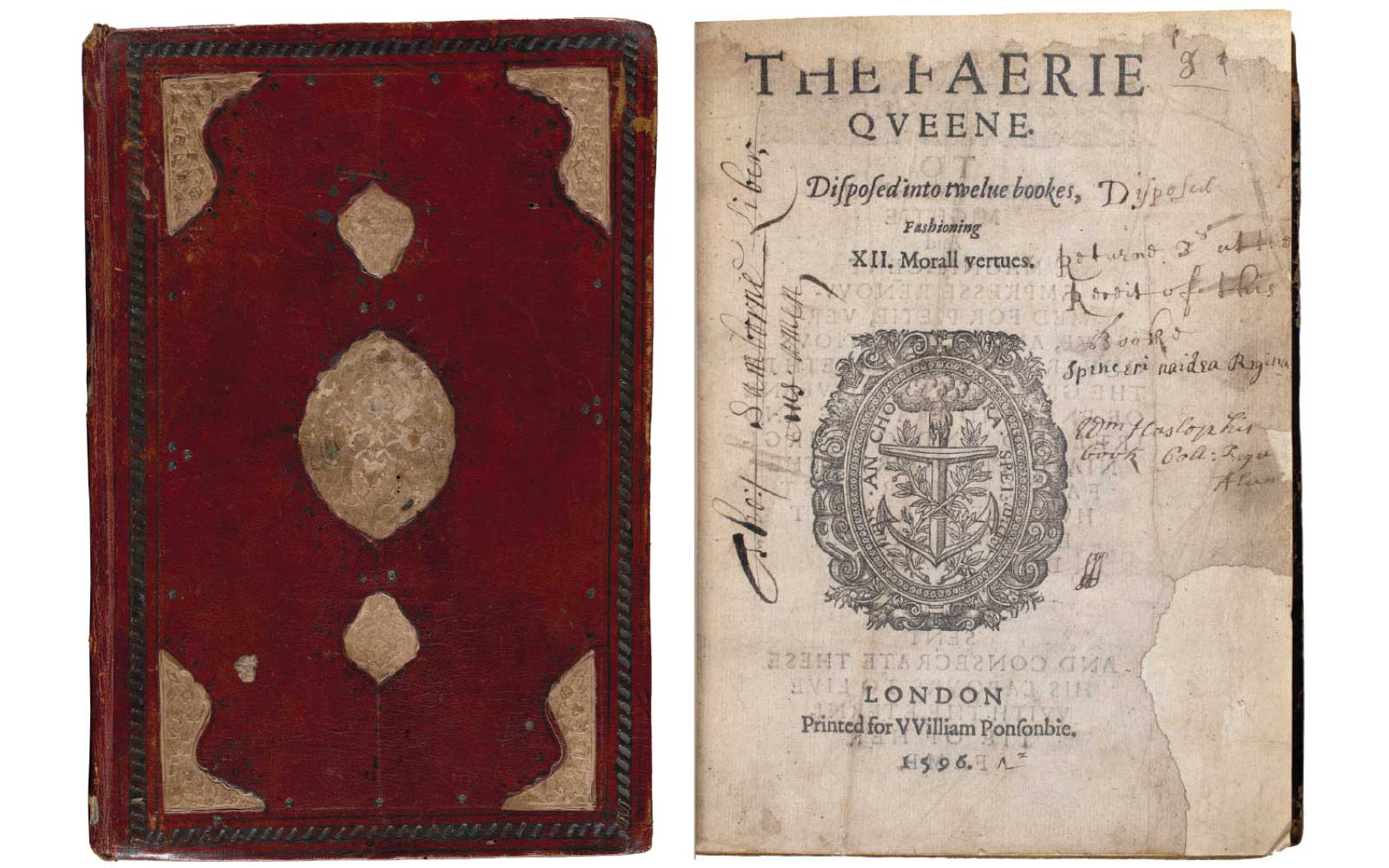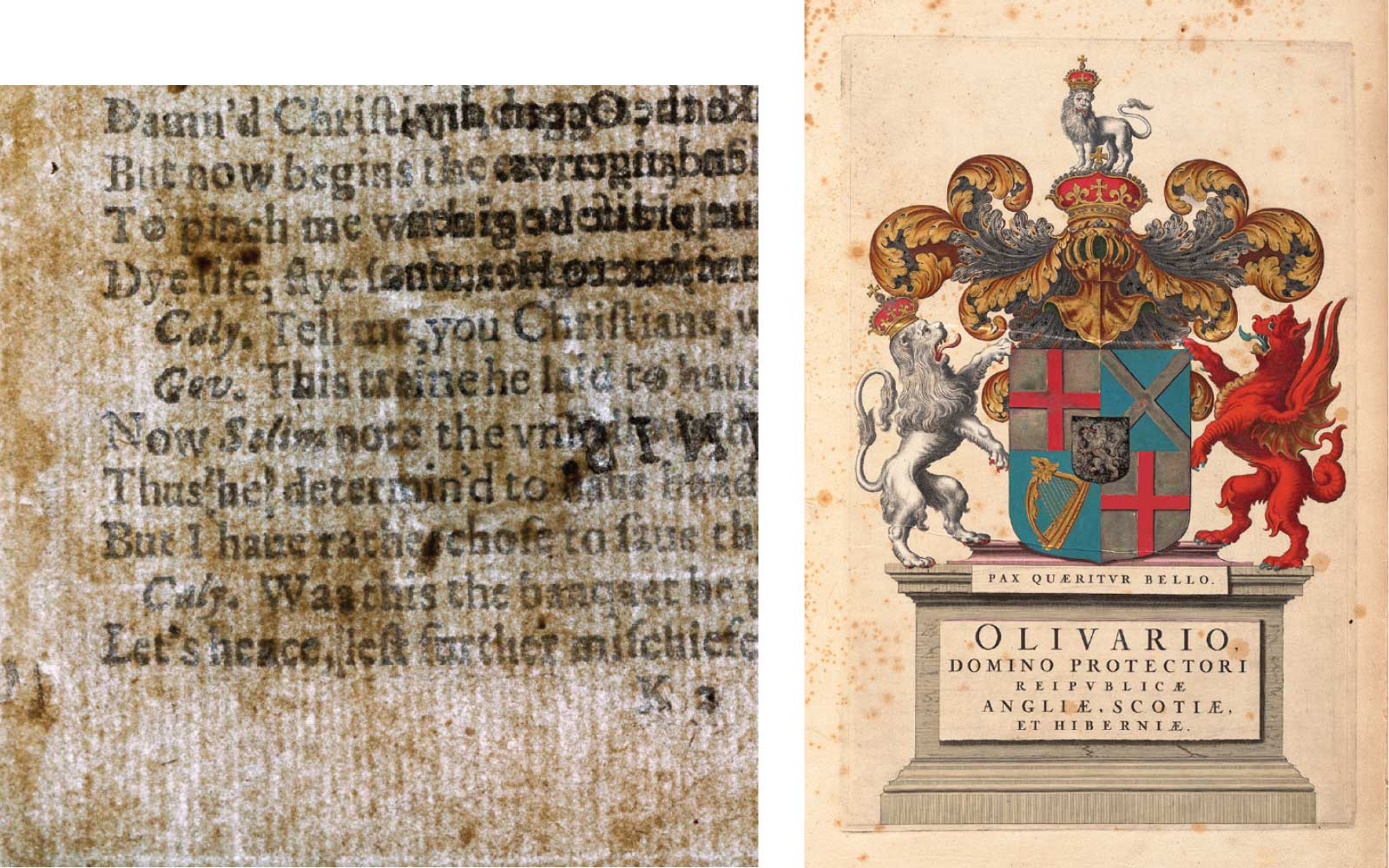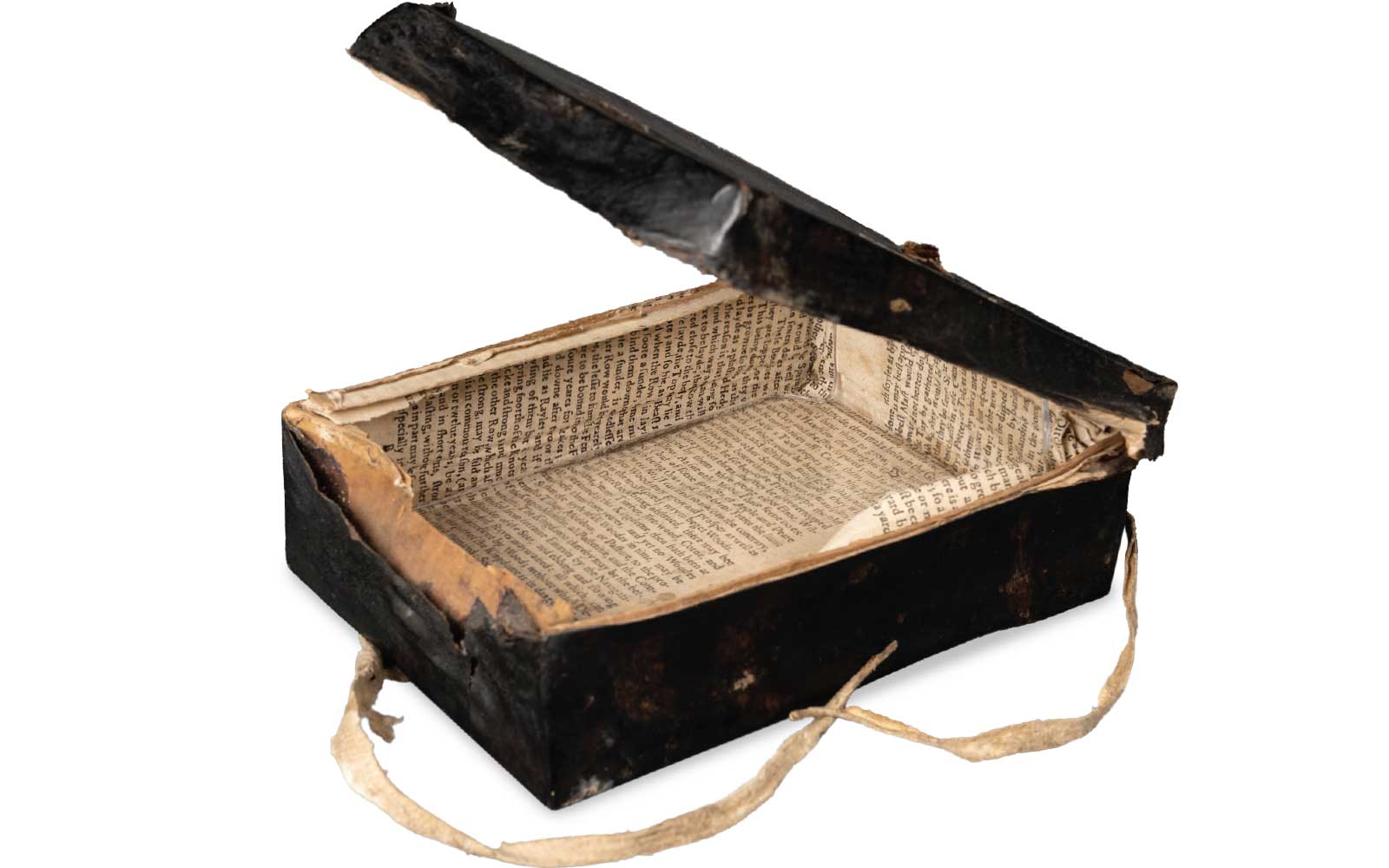The Long Lives of Very Old Books features more than a few traditional high points. Among the more than 150 objects in the exhibition, visitors will see Copernicus and Newton first editions, Oliver Cromwell’s presentation copy of Joan Blaeu’s atlas of Scotland and Ireland, Aldines bound in the Islamicate world, a Nuremberg Chronicle that underwent multiple campaigns of hand coloring, and all three of the Center’s copies of the First Folio - it is, after all, the Shakespeare edition’s 400th anniversary.
Each is a compelling, research-worthy volume. Easily as exciting to me, though, are the quirkier, messier items: a Geneva Bible that purportedly arrived on the Mayflower, a copy of Spenser’s The Faerie Queene that was rented by a Cambridge undergrad, English playbooks with leaves stolen from the British Library, a seventeenth-century archival storage box lined with printed waste, and an extra-illustrated demonology treatise that recently had a cameo in a Christian Bale movie.
The exhibition opens with a favorite acquisition of mine, one firmly on the odder, more surprising end of the spectrum. On the evening of December 7, 2018, I had been up late scrolling through eBay listings when a book listed by Midtown Scholar in Harrisburg, Pennsylvania, caught my eye: “1590 EARLY PRINTING HUGH BROUGHTON A CONCENT OF SCRIPTURE PHILIP HOFER HARVARD.” After perusing the photos and description, I knew I had to have it. As the listing’s title indicated, the book was once owned by a Harvard curator, Philip Hofer.
His use of this book is interesting - he removed the edition’s engravings to insert into another copy he owned - but I saw something else, something I’d never seen before in an early printed book: a young man used blank leaves bound at the back of this Elizabethan edition for his personal diary around 1970. (As the listing was sure to note, the diarist mentions getting a copy of The Beatles’s album Let It Be.) Desperate not to miss out, I scrambled to find a bookseller who was still awake to pull the trigger for me. Enter Heather O’Donnell of Honey & Wax Booksellers, who had just posted on Twitter and was willing to buy the volume on the Ransom Center’s behalf. The book eventually provided inspiration for this exhibition’s attention to early editions’ later histories of circulation.
Following this evocative—and, for some visitors, provocative—volume, the gallery is divided into four sections:
- 1) “Survival” analyzes books that we still have today to think through just how much we’ve lost and why we’ve lost it. A subsection considers instances when the early modern culture of recycling has preserved manuscripts and printed documents that would otherwise probably be lost.
- 2) “Variation” explores aspects of content and binding that differentiate copies of early editions from one another. Among them are stop-press corrections, special issues on large and colored paper, custom volumes that bring together multiple editions between a single pair of covers, and bindings from the most humble to among the most deluxe.
- 3) “Marking” attends to some of the myriad ways collectors, institutions, and booksellers have inscribed and otherwise marked their books. Bookplates, gift inscriptions, book trade markings, doodles, and fore-edge painting appear here. Annotation, too.
- 4) Finally, “Repair” looks at techniques used for mending paper and bindings over the centuries. Amateur efforts sit alongside professional work so impressive that it can be hard to detect.
In the end, each book on display in The Long Lives of Very Old Books serves as a case study in what looking at old books can teach us, not only about the books themselves, but about the people who have engaged with them over the centuries, who have left signs of their beliefs and values both in and on them.



















